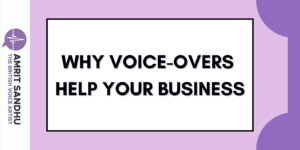Landing voiceover gigs often hinges on one crucial element: the audition. It’s your chance to shine, to showcase your talent, and to convince casting directors that you’re the perfect voice for their project. This May, let’s transform your audition approach from nervous anticipation to confident execution. This blog post will equip you with the strategies and techniques to conquer the audition process and secure those coveted voiceover roles.
I. Pre-Audition Preparation: Laying the Groundwork for Success
Before you even think about hitting the record button, meticulous preparation is key. This isn’t just about reading the script; it’s about understanding the project, crafting your performance, and presenting yourself professionally.
– Deep Dive into the Script: Don’t just read the script; understand it. Who is the target audience? What is the overall tone and style? What emotions need to be conveyed? Analyze the script’s nuances, identify key phrases, and understand the character’s motivations (if applicable).
– Character Development (If Applicable): If the audition involves a character, invest time in crafting a believable persona. Consider the character’s age, background, personality, and emotional state. Develop a distinct voice and mannerisms that reflect their unique traits. Don’t be afraid to experiment and find what works best.
– Technical Setup: Ensure your recording environment is optimized for pristine audio quality. This includes a quiet space, a high-quality microphone, proper microphone placement, and the use of a pop filter to minimize plosive sounds. Test your equipment beforehand to avoid technical glitches during the audition.
– Practice, Practice, Practice: Rehearse the script multiple times until you feel comfortable and confident. Experiment with different interpretations and find the performance that best captures the essence of the script. Record yourself and listen back critically, identifying areas for improvement.
II. During the Audition: Delivering a Stellar Performance
The audition itself is your stage. Your goal is to deliver a compelling performance that showcases your skills and leaves a lasting impression on the casting director.
– First Impressions Matter: Begin with a professional and enthusiastic introduction. Clearly state your name and the project you’re auditioning for. This sets a positive tone and demonstrates your professionalism.
– Clear and Concise Delivery: Speak clearly and articulate each word precisely. Maintain a consistent pace and rhythm, avoiding monotone delivery. Use intonation and inflection to convey emotions and meaning effectively.
– Emotional Range and Nuance: Don’t be afraid to showcase your emotional range. Convey the emotions required by the script authentically and convincingly. Subtle nuances in your delivery can significantly enhance your performance.
– Technical Proficiency: Demonstrate your technical skills by maintaining consistent volume levels, avoiding distracting noises, and delivering a clean, professional-sounding recording.
– Multiple Takes: Record multiple takes of your audition to provide the casting director with options. This allows them to choose the take that best suits their needs. Vary your approach slightly in each take to showcase your versatility.
III. Post-Audition Follow-Up: Maintaining Momentum
Even after you’ve submitted your audition, the process isn’t over. A thoughtful follow-up can significantly increase your chances of landing the gig.
– Thank You Note: Send a brief thank-you note to the casting director expressing your gratitude for the opportunity. This demonstrates your professionalism and reinforces your interest in the project. – Check-in (Subtly): A week or so after submitting your audition, a subtle check-in can be appropriate. Avoid being pushy or demanding; simply inquire about the timeline for casting decisions.
– Learn from Feedback (If Provided): If you receive feedback on your audition, analyze it carefully and use it to improve your performance in future auditions. Even constructive criticism can be valuable in helping you refine your skills.
IV. Common Audition Mistakes to Avoid:
Knowing what not to do is just as important as knowing what to do. Avoid these common audition pitfalls:
– Poor Audio Quality: Nothing derails an audition faster than poor audio quality. Invest in good equipment and ensure your recording environment is optimized for clear sound.
– Lack of Preparation: Failing to prepare adequately is a recipe for disaster. Thoroughly research the project, understand the script, and practice your delivery until you feel confident.
– Monotone Delivery: A monotone voice is boring and unengaging. Vary your pace, rhythm, and intonation to keep the listener interested.
– Ignoring Directions: Pay close attention to the audition instructions and follow them carefully. Ignoring directions demonstrates a lack of professionalism and can hurt your chances.
– Being Unprofessional: Maintain professional communication throughout the entire process. Respond promptly to inquiries, meet deadlines, and be respectful of the casting director’s time.
V. May’s Audition Challenge: Stepping Outside Your Comfort Zone
This May, challenge yourself to step outside your comfort zone. Audition for projects that push your boundaries, require you to develop new skills, or explore different genres. This will not only improve your versatility but also expand your network and open doors to new opportunities. Embrace the challenge, learn from your experiences, and celebrate your victories along the way.
Mastering the art of the audition is an ongoing process. By consistently practicing these techniques, refining your skills, and maintaining a professional approach, you’ll significantly increase your chances of achieving voiceover victory this May and beyond. Good luck, and happy auditioning!




